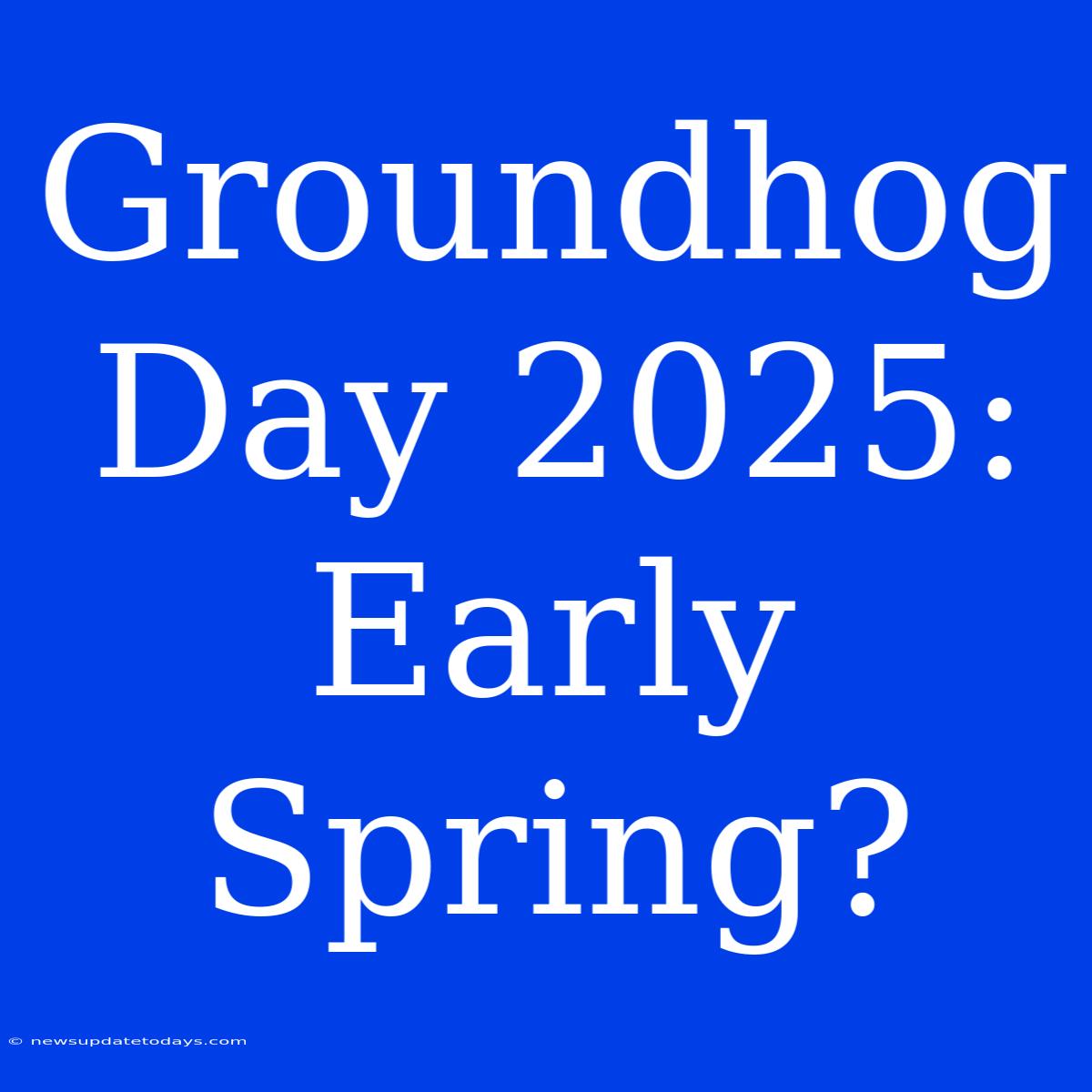Groundhog Day 2025: An Early Spring Prediction?
Groundhog Day, celebrated annually on February 2nd, is a quirky American tradition with a serious question at its heart: Will spring arrive early, or are we in for a longer winter? This year, all eyes are on Punxsutawney Phil and other groundhogs across the nation as they make their predictions for Groundhog Day 2025. While the prognostications of these furry meteorologists are largely symbolic, they still spark widespread interest and speculation.
This article delves into the history of Groundhog Day, examines the meteorological factors that might influence Punxsutawney Phil's prediction for 2025, and explores the potential implications of an early spring.
The History and Tradition of Groundhog Day
The tradition of Groundhog Day is rooted in a German legend involving a hedgehog predicting the weather. Pennsylvania Dutch settlers brought this tradition to America, substituting the hedgehog with the groundhog, a more readily available creature. The legend dictates that if the groundhog sees its shadow on Groundhog Day, it will be frightened and retreat back into its burrow, signifying six more weeks of winter. If it doesn't see its shadow, spring will arrive early.
Punxsutawney Phil, arguably the most famous groundhog, has been making predictions since 1887, attracting global attention. While his accuracy is debatable (some sources claim a 39% success rate!), his annual appearance maintains the charming tradition and generates significant media buzz.
Predicting Groundhog Day 2025: Meteorological Factors at Play
While Phil's prediction is largely symbolic, several meteorological factors can influence the likelihood of an early spring in 2025. These include:
- Winter Temperatures: A milder than average winter preceding Groundhog Day could suggest an earlier arrival of spring. Conversely, a particularly harsh winter might delay the season's change.
- Snow Cover: Significant snow cover can delay the thaw and extend winter's grip. A lighter snowpack could accelerate spring's arrival.
- Atmospheric Patterns: Large-scale weather patterns, such as the North Atlantic Oscillation (NAO) and Arctic Oscillation (AO), play a crucial role in determining winter and spring temperatures and precipitation. Their behavior in the months leading up to Groundhog Day 2025 will be a key indicator.
Experts generally caution against relying solely on the groundhog's prediction. Instead, they suggest monitoring long-term weather forecasts and patterns for a more accurate assessment of spring's arrival.
Implications of an Early Spring
An early spring could have various consequences, both positive and negative. These include:
- Agriculture: An early spring could benefit certain crops, allowing for earlier planting and potentially higher yields. However, it could also expose crops to late-season frosts, damaging vulnerable plants.
- Wildlife: The timing of spring affects the breeding cycles and migration patterns of many animals. An early spring could disrupt these natural processes.
- Tourism: An early spring could boost tourism in regions that rely on warmer weather, but it could also negatively impact winter sports industries.
Conclusion: Beyond the Folklore
While Punxsutawney Phil's prediction for Groundhog Day 2025 will undoubtedly generate excitement, it's crucial to remember that his forecasting abilities are purely symbolic. Reliable weather predictions require a scientific approach, relying on data analysis and meteorological expertise. Still, the tradition of Groundhog Day offers a fun and engaging way to anticipate the coming of spring, reminding us of the cyclical nature of the seasons and the enduring power of folklore. Stay tuned for Phil's prediction and let's see if he gets it right this year!

